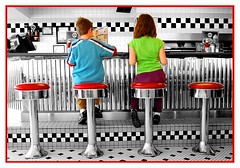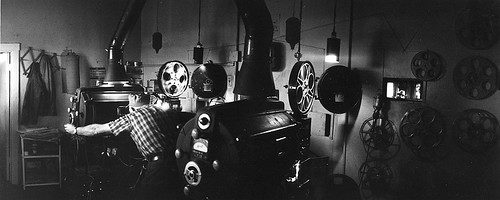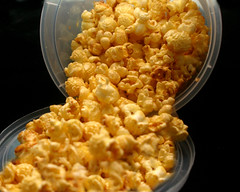
Some people have a passion for football, some a passion for art. Jason Alley has a passion for movies, all movies. He has seen 337 movies (new to him) this year and the year isn’t over yet. He has see somewhere between 120 and 150 movies in the theater. This is average for Jason. For a long time, his daily routine has been to wake up, exercise, watch a Netflix movie while eating breakfast, go to see a movie at the theater, then head to his job as manager of an independent movie theater. That is a daily routine, every day, Monday through Friday.
When he was six, Jason went to see Gremlins. It is one of his earliest memories of falling in love with movies. “I was terrified to go see it because it was the first movie I went to that wasn’t G rated, and I didn’t know exactly what that meant, but I knew that it would be something different than what I had seen before. I even made my mom sit in the back row with me so that I could run out of the theater if I got too scared.” He didn’t get too scared. In fact, Gremlins, as well as The Never Ending Story and Goonies, were the three movies influenced his obsession. “That period in my life, watching those movies, it swept me away. I was hooked on the way movies take you to a different place mentally and emotionally.”
Jason keeps all of his movie ticket stubs, all of them. When he was in high school, he kept a chart on his wall where he gave a star rating to every movie he watched, from zero to four. When he got his first computer, he built his own, simple website where he wrote movie reviews. Seven year later, he is still doing it. “I just like putting my opinion out there, I like reading other people’s opinions. I like debating about stuff.” Check it out.
Jason loves movies so much that he got a job at an independent movie theater. He has been managing the Crest Theater in downtown Sacramento for four years. When he was younger, he wanted to direct movies, but after taking some college courses, he realized that there was a lot of technical stuff involved in directing and decided it wasn’t for him. He has thought about writing a screenplay, but is perfectly happy just watching. “To quote John Cusack in High Fidelity, “I’m a professional appreciator.”
Although Jason loves all genres of movies, his favorite is the horror genre. He says horror films instantly take him back to his childhood and why he fell in love with movies. He goes to the Fangoria Convention, which is the biggest horror convention in the United States, every year. “There’s just something about being a horror movie buff that’s different than being a fan of other kinds of movies. When you get two horror movie geeks in a room together, it’s almost like a religious conversation.”
As a child, Jason and his brother bonded over their love of movies. “We had this thing in 1990 when I was in sixth grade and my brother was home after his first year in college and we called it the summer of a thousand movies because we went to the movies every day. And when there wasn’t anything new to see, we would just go see Arachnophobia. We probably saw that movie 12 times that summer.”
What is the favorite movie of someone who watches well over 300 movies every year? Well, for Jason its George A. Romero’s 1978 zombie classic, Dawn of the Dead. “I remember the first time I watched it, about halfway through I thought ‘This is something like I’ve never seen before. When you watch a movie that you really love, you get that certain buzz that you don’t get from watching a regular movie.”
What is his least favorite movie? Da Hip-Hop Witch. Rent it on Netflix.





















